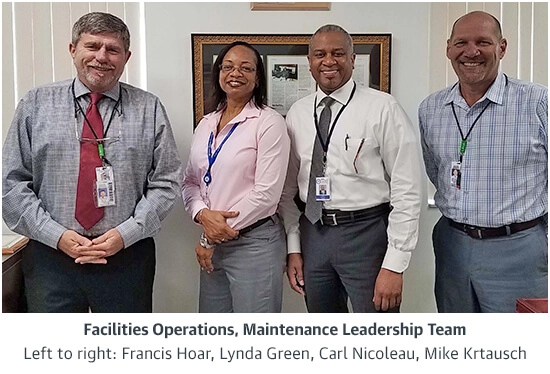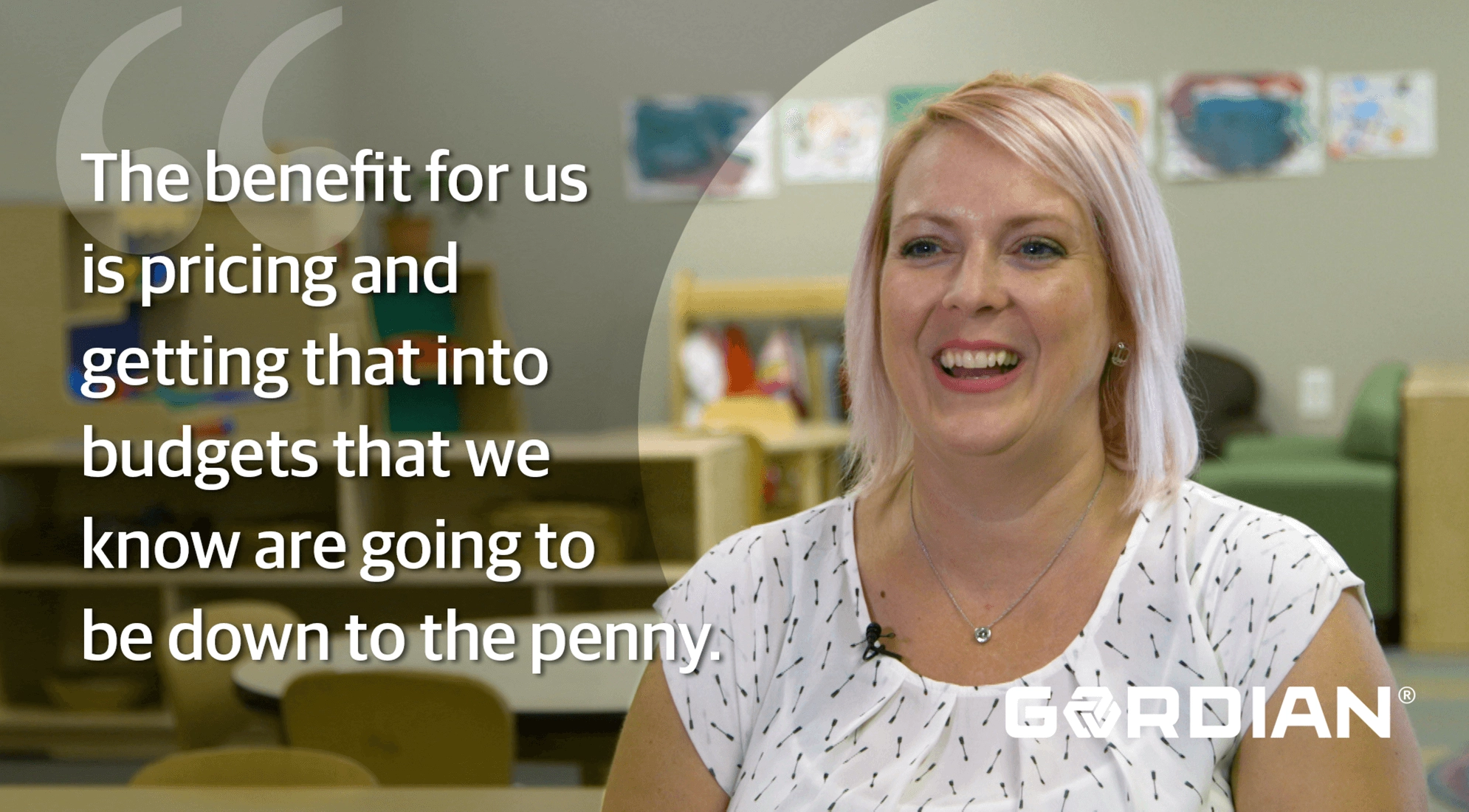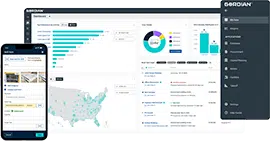K-12 Facilities Management Updates from Francis Hoar
K-12 facilities are constantly evolving with the changing times. Staying abreast of these trends is no easy task. Due to this reality, it’s pivotal to keep an open mind toward innovations in the field and remain focused on tried and true best practices to stay ahead of the curve.
Miami-Dade County Public Schools is comprised of 392 facilities – 360 of which are education – and 54 million square feet (not including grounds). The district employs a workforce of 700 individuals composed of administrative, trades and support roles. Miami-Dade County is the fourth largest school district in the U.S. A truly global community, district students speak 56 different languages and represent 160 countries.
The school district has used Gordian’s Job Order Contracting (JOC) solutions since 1991 – in fact they were one of our first clients. JOC is a proven construction procurement process ideal for use on renovation, building envelope and MEP improvements and smaller new construction projects in support of the customer’s program.
For nearly three decades Francis Hoar has been with the district, and he currently serves as Miami-Dade Public Schools’ Administrative Director. He shares his insights on the construction industry, trends in K-12 facility management and how his team is able to effectively manage the diverse needs of the district across the county.
How has the landscape of K-12 facility maintenance and operations changed in the past few years?
When I first entered the education field there was no competition. You either went to private school or you went to public school – there was no such thing as a charter school. The charter schools drain resources from the traditional public schools in Florida. Charters have been able to successfully take a portion of our students that we may have taken for granted in the past. This whole process of competition has created a level of expectation that was never there before. We’ve had to adapt, work harder (and smarter) with less.
What are current challenges impacting Miami-Dade County Public Schools?
We have a large number of facilities, and they’re located throughout the county based on demographics that have changed considerably in the last 20 years. Those changing patterns leave us with underutilized facilities. On the other hand, we end up with some facilities located in once sparsely populated areas where the population growth has suddenly exploded. The district has to be innovative and think outside the box to bring students back into those areas mostly located in the urban core.
Another challenge we have to address is changing times. Our basic school design concepts from 50 years ago are no longer applicable and do not meet today’s needs for safety and security. That is a challenge because we have to deal with numerous facilities that are 50, 60 and 70 years old that were envisioned to be neighborhood hubs designed to provide open access to the surrounding community. All of a sudden, now we’re looking at how to harden the perimeter of those same facilities and provide robust security for our students and staff.
How are you addressing these safety challenges?
Safety and security is currently our number one priority. Our approach is simple – the solutions should be comprehensive with participation and input from all stakeholders. In our case that includes Facilities, School Operations, Department of Safety and School Police. Our School Police are obviously at the forefront – we as maintenance and facilities professionals are a very important part of that group. How do we secure our facilities but at the same time provide a conducive learning environment that embraces the students, teachers and the parents? Basically, what’s required is a meeting of the minds and a common resolve. That’s where as a team we need to develop tailored plans that address the unique requirements for each of our facilities that provide the safety our students are entitled to.
 What are some of the major trends impacting K-12 in 2018 and beyond?
What are some of the major trends impacting K-12 in 2018 and beyond?
First and foremost, technology. And to be honest, our major challenge is as new technology becomes available and is integrated into our facilities, we have a combination of an older workforce that has to be educated and become proficient. They need to understand how to leverage what is provided to them to be more efficient, so we follow a simple approach. As new technology is introduced into our building systems, we require an associated training component for our staff. This training element allows us to provide the required maintenance needed.
Additionally and equally as important, competition in public education and vying for students that might otherwise go to a private or a charter school has resulted in our district embarking on an effort to rethink the learning environment. We’re designing and constructing classroom space that is not the traditional rectangular classroom with 30 desks. There’s been thought put into the design and the type of material used. It’s not cookie cutter anymore, and these new cutting edge spaces are attractive to students and their parents.
What are some of the challenges impacting the construction industry as a whole?
Right now a significant challenge we’re facing is the overheated construction industry in South Florida. If you look at our skyline there is crane upon crane upon crane on the horizon. Simultaneously we’re undertaking a $1.2 billion bond program for deferred maintenance and facilities enhancements. That has driven a combination of issues that have made it much more difficult to stay within the budgets developed four or five years ago because construction costs have skyrocketed and continue to change significantly from day to day. This makes it a very challenging environment to get some of this work done. Talking to colleagues, I think this isn’t only isolated to South Florida and is in fact affecting the state as a whole.
With so much work on hand, what are some of the key best practices or techniques that contribute to a successful project?
We use all sorts of delivery methods to get work done – we have single trade discipline term bid contracts, and we have Job Order Contracting that we use whenever we need a general contractor to address more complicated, multi-disciplined projects. And obviously we do have some in-house crews we utilize for specific types of work. We try to have as many resources as possible, so we can pick the most cost effective way of addressing any particular program or project.
Why did you start using Job Order Contracting?
Well we started using JOC in 1991. We found the process of engaging contractors for small projects was way too complex. It did not allow maintenance to effectively address emerging projects that need immediate results. The JOC concept addressed that need. What we wanted was a long-term relationship with a contractor that could be mobilized quickly and efficiently. Since it’s a performance based delivery system, no one is entitled to any particular project, and you’re as good as the last project you completed.
It has been a successful program for us over the last 28 years, and we’ve used it for everything. To give you a perspective of the breadth and volume that we’ve done with JOC, we’ve issued more than 3,000 work orders with a value of about $330 million.
How important are your relationships with contractors?
Having honest, strong relationships with contractors are essential. And JOC helps facilitate these relationships. When they understand our needs, we understand the operational issues involved. Then we add knowledgeable and professional project managers, it makes for a winning combination. Everyone is invested and incentivized to perform at their best.
JOC has also enabled us develop programs that allow us to work with MWBE contractors throughout the community, and this is very important to us. These programs enable smaller contractors to work within the school system under a controlled environment, allowing them to get used to how we operate and become familiar with our processes and procedures. They eventually progress into the much larger construction projects they would otherwise not had the opportunity to participate in, and we’re proud to help these businesses grow.
Why should others consider a career in facilities management?
First of all, I think facilities management is a career that is overlooked by a lot of individuals that probably would thrive in the field. I see the industry evolving because of technology and other socioeconomic factors. These changes offer opportunity for those individuals seeking a challenging work environment that rewards ingenuity and innovative thinking. There will always be a need for experienced facilities management professionals. It’s never is going to go away as an industry.
Francis Hoar Bio

For 41 years he has been married to his wife Julia, who also works for the district as a high school teacher. They have two adult children and two beautiful granddaughters that live in Abilene Texas. For leisure, Francis enjoys the outdoors – his hobbies including horseback riding, gardening, hunting and target shooting. Miami-Dade County has been his home since 1973. He was born and grew up in South and Central America and is fluent in English and Spanish.
Subscribe to the Executive Interview Series to access monthly insights from industry experts.

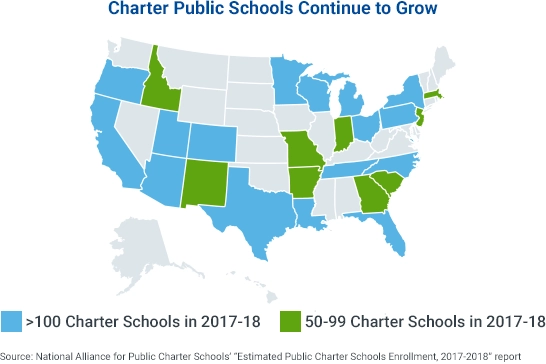
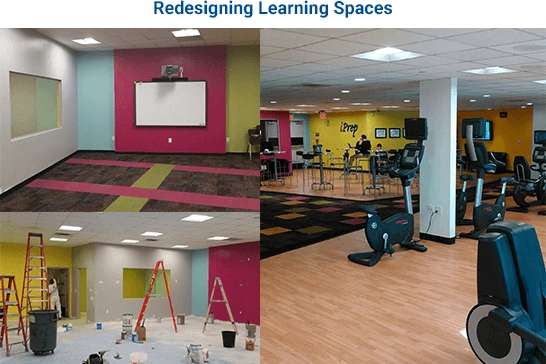 What are some of the major trends impacting K-12 in 2018 and beyond?
What are some of the major trends impacting K-12 in 2018 and beyond?